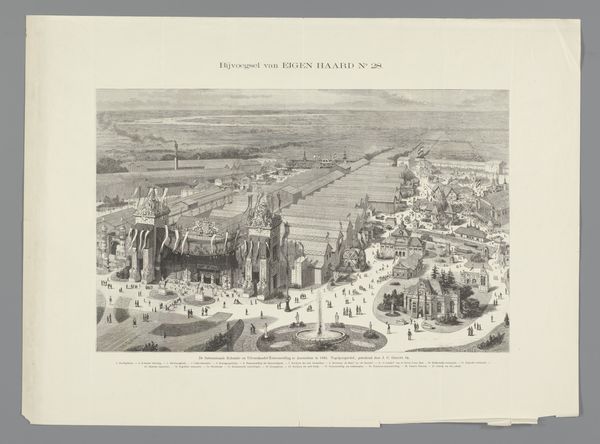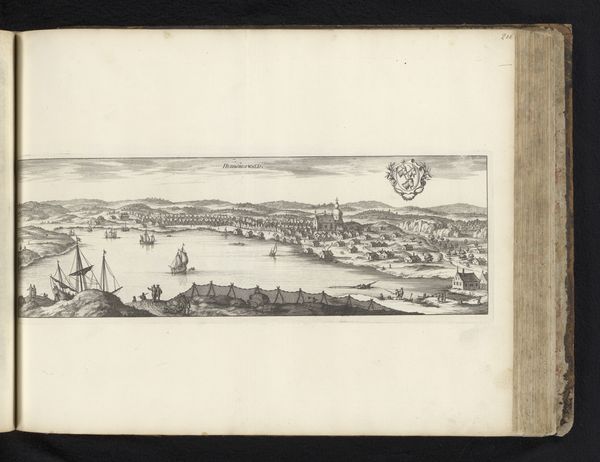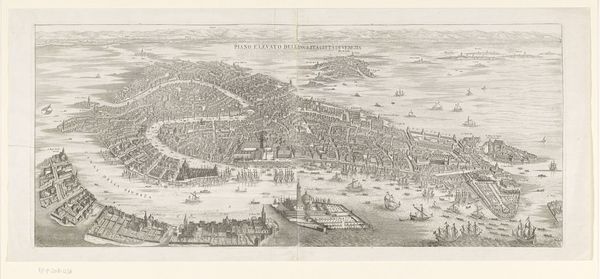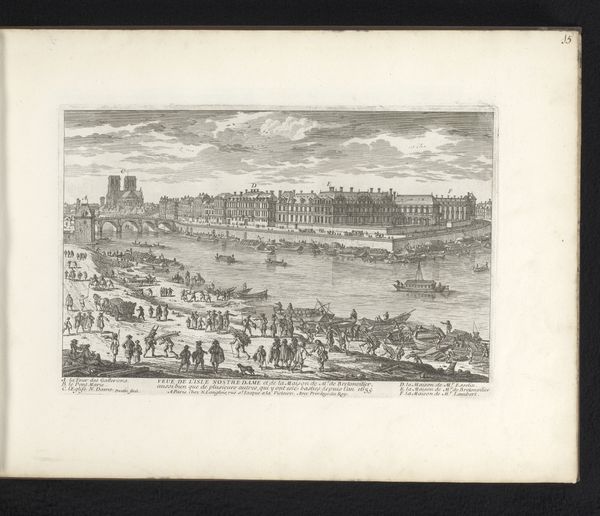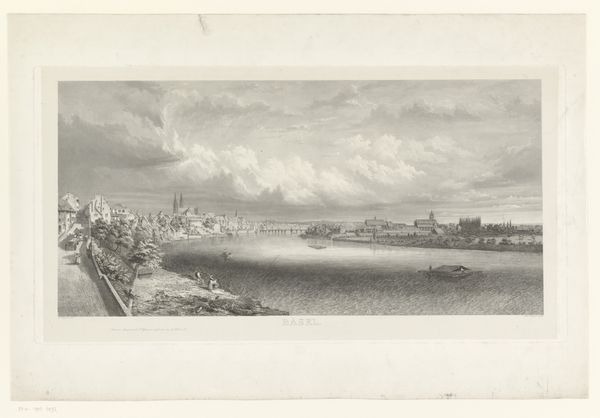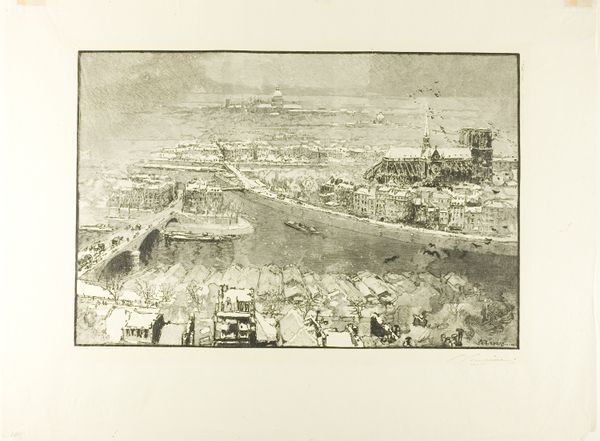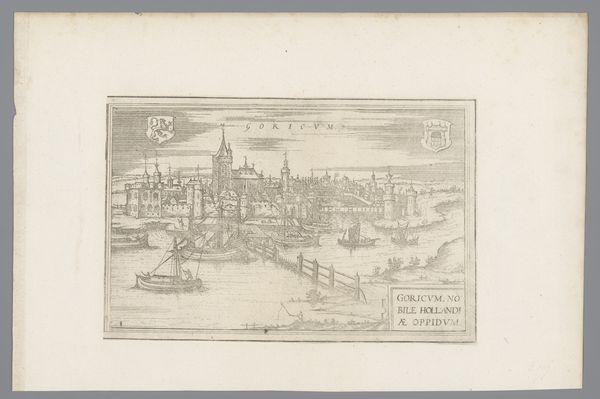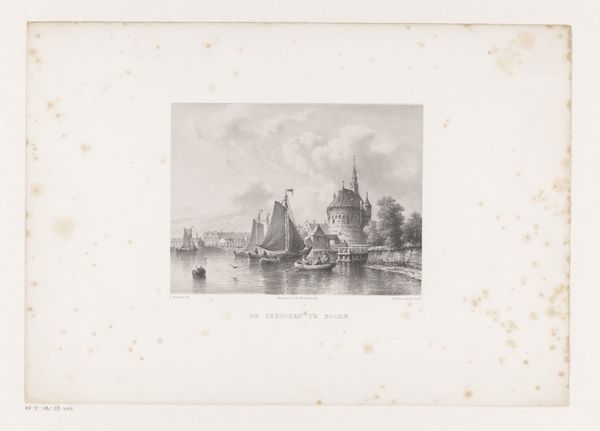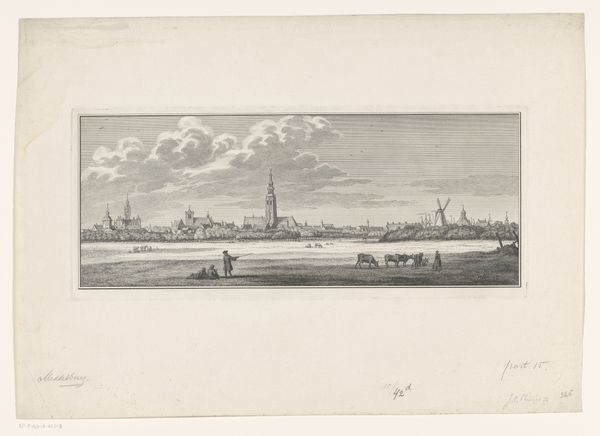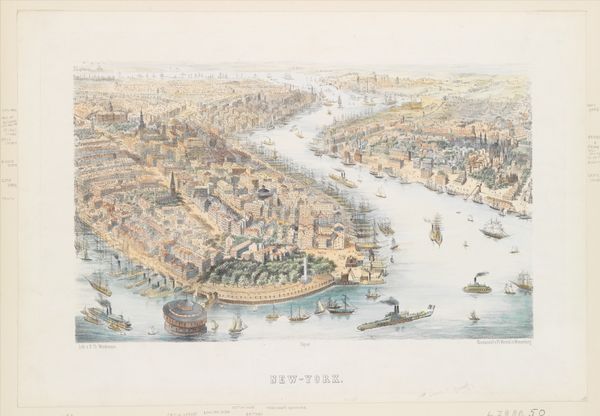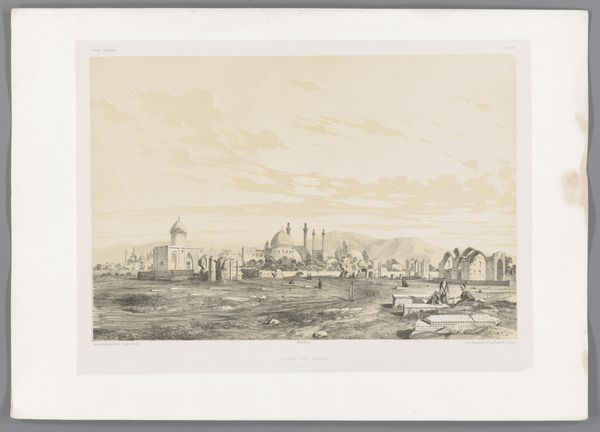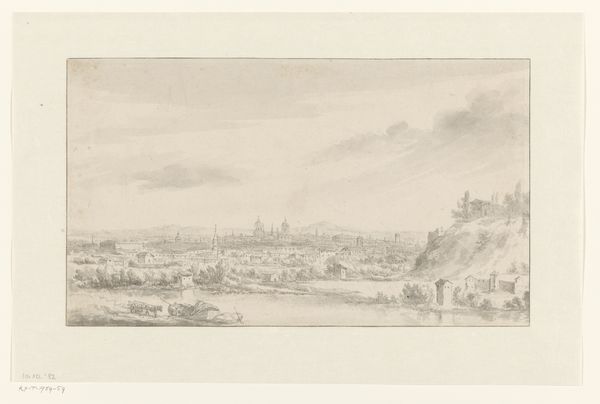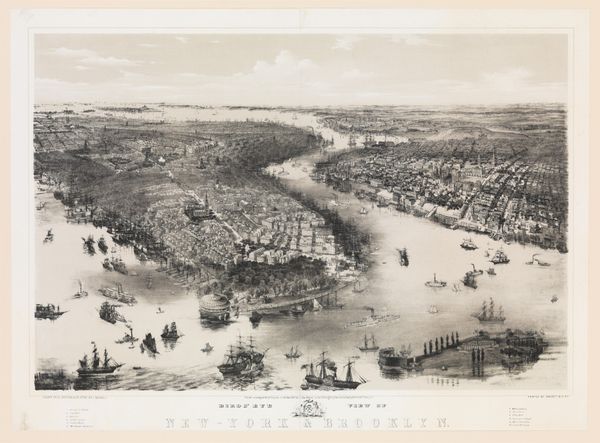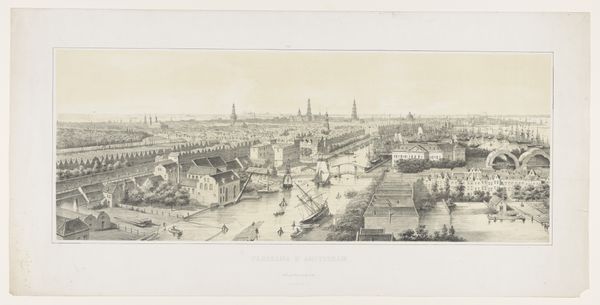
Gezicht op Venetië in vogelvluchtperspectief 1842 - 1887
0:00
0:00
Dimensions: height 167 mm, width 237 mm
Copyright: Rijks Museum: Open Domain
Curator: Here we have Carel Christiaan Antony Last's "View of Venice in Bird's-Eye Perspective," a print from the period of 1842 to 1887, held here at the Rijksmuseum. Editor: What strikes me first is the density—a sort of organized chaos. You see this bustling city built on water, all meticulously rendered, yet there is a calmness with soft shading which seems fitting for Romanticism. Curator: Indeed. This "bird's-eye perspective" print provides us with an interesting look at the means by which imagery like this was created and distributed in that time, focusing on the materiality of the printing and engraving process itself. Imagine the labour that went into meticulously etching each building. It really highlights the relationship between artistry and industrial production. Editor: And look at how the artist carefully details everything! Each tiny ship suggests adventure. Venice, historically, was a crossroads—a blend of East and West. It echoes the city's historic role as a hub of commerce and conquest, both a beautiful symbol of humanity's drive, yet also of a deep historical past of mercantile dominance. Curator: Good point. One sees in Last's rendering a tangible example of a printmaker interpreting, then reproducing the city—each aquatint impression made accessible, each sheet demonstrating the power of replicated imagery in disseminating culture to a wide audience beyond those who could physically visit Venice. Editor: The print uses its symbolic imagery to evoke an emotional reaction in the viewer, calling forth the romantic image of the city and its powerful and enduring effect on Western memory and society through trade, colonialism, and conflict. This makes us confront that tension between aesthetic beauty and Venice’s intricate cultural impact. Curator: That complexity certainly challenges conventional thinking regarding high art—engravings made widely available and intended for mass circulation—but nonetheless embodying intricate technique. It really expands ideas of what we traditionally regard as artworks. Editor: Ultimately, Last’s image isn't just a map. It’s an embodiment of Venice itself and stands as an example of art's powerful role in recording memory, transmitting narratives, and triggering societal imaginaries that stand outside of time.
Comments
No comments
Be the first to comment and join the conversation on the ultimate creative platform.
